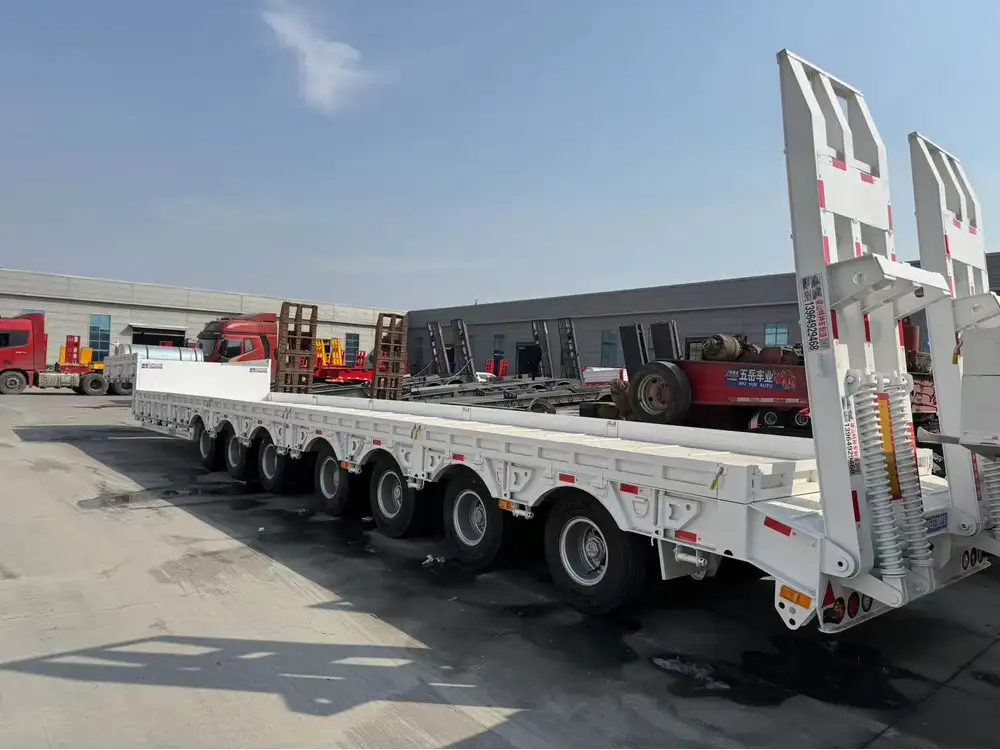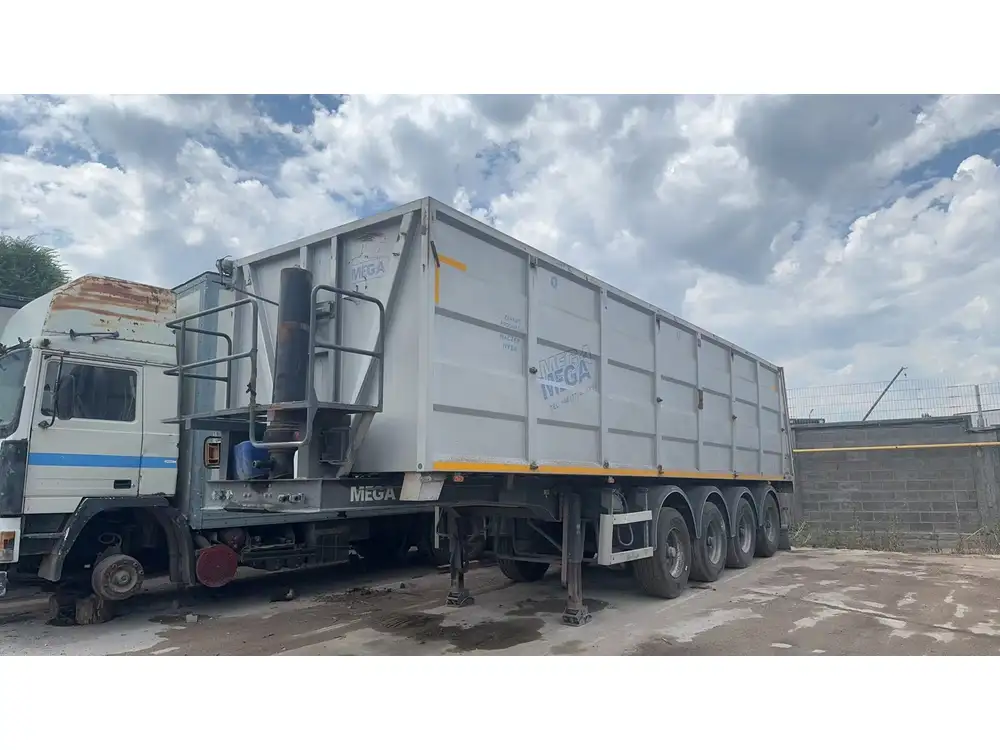When it comes to the construction and longevity of semi-truck trailers, understanding the materials utilized for the floors is paramount. A trailer’s floor not only needs to withstand significant weight and pressure but also must endure varying environmental conditions, ensuring safety and efficiency during transportation. This article will dissect the nuances of wood choice for semi-truck trailer floors, the characteristics of the chosen materials, and considerations for manufacturers and fleet operators alike.
The Role of Flooring in Semi-Trailer Trailers
The flooring of a semi-trailer serves as the backbone for transportation, acting as the platform that supports cargo. Given the intense demands placed on trailer floors, both in terms of weight capacity and durability, the selection of the right wood species is crucial. A well-constructed floor enhances safety, improves the lifespan of the trailer, and reduces maintenance costs.
Top Wood Choices for Semi-Truck Trailer Floors
Not all wood is created equal, especially when it comes to the rigorous demands of semi-truck trailer floors. Here are the top wood types typically utilized:
| Wood Type | Characteristics | Advantages | Disadvantages |
|---|---|---|---|
| Plywood | Engineered wood made from thin layers of veneer | High strength-to-weight ratio, moisture resistance | Can delaminate if not properly treated |
| Hardwood | Dense, durable wood from deciduous trees | Excellent strength and longevity; aesthetic appeal | Higher cost than softwoods |
| Softwood | Wood from coniferous trees | Economical and lightweight | Less durable; prone to dents and scratching |
| Composite Wood | Mixture of wood fibers and adhesives | Resistant to moisture and pests; versatile | May have varying quality based on manufacturing |

An In-Depth Look at Each Wood Type
Plywood
Plywood is one of the most favored materials for semi-trailer floors due to its incredible resilience and adaptability. Made from layers of wood veneer glued together, plywood features enhanced strength while maintaining reduced weight. Its moisture-resistant properties are critical in preventing water damage, ultimately prolonging the lifespan of the trailer floor.
Common Grades of Plywood:
- Marine Plywood: Ideal for flooring in wet conditions, it is resistant to rot and delamination.
- Exterior Plywood: Suitable for moderate exposure to moisture but may not perform as well as marine-grade in severe conditions.
Usage Recommendation: We suggest opting for at least 3/4-inch thick marine-grade plywood for heavy-duty applications requiring maximum durability.
Hardwood
Hardwoods such as oak and maple are notable for their density and strength. These types of wood provide a sturdy platform that can support heavy loads without significant wear.
Advantages: The fine grain pattern of hardwoods not only provides aesthetic value but offers superior impact resistance. Moreover, hardwood floors can be sanded down or refinished, extending their operational life.
Consideration: While hardwood flooring is robust, it typically comes with a higher price tag. Manufacturers must assess whether the investment aligns with their operational needs.

Softwood
Softwood options, including pine and fir, are often more economical and lighter than hardwoods. They can be suitable for lighter and less demanding loads.
Benefits: Their availability and cost-effectiveness make them appealing, but care must be taken as they are more susceptible to damage from heavyweights and rough cargo handling.
Limitations: Loading heavy machinery or equipment onto softwood floors may present issues; hence, careful evaluation of anticipated loads is essential.
Composite Wood
Composite wood consists of glued wood fibers and is designed for high performance, particularly concerning moisture resistance. This synthetic option can outperform natural wood types in specific applications, avoiding problems related to rot and pests.
Key Advantages: Durability and less environmental impact as they utilize recycled materials create a compelling case for companies focusing on sustainability.
Drawbacks: The manufacturing process can lead to variations in quality, and they may not offer the same structural integrity as solid woods in some cases.
Key Factors in Choosing the Right Wood
When manufacturers evaluate the appropriate type of wood for semi-trailer floors, several factors come into play:
Weight Capacity: Understanding the maximum load weight the floor will bear is critical. Aligning wood selection with these requirements can prevent potential failures.
Environmental Conditions: Depending on geographical routes and weather conditions, wood must exhibit resistance to moisture, temperature fluctuations, and pests.
Cost and Budget: Balancing quality and affordability is essential for manufacturers. While high-quality woods offer benefits, they also come at a premium price.
Longevity and Maintenance: Consider the expected lifespan and required maintenance of the flooring material. Some options may require regular coating or treatment to protect against wear.

The Installation Process: Handling and Maintenance
Installation Techniques
Installing a semi-trailer floor correctly is vital to prevent future complications. Common practices include:
- Correct Spacing: Ensuring proper spacing to allow for expansion and contraction of wood.
- Adhesive Use: Using high-quality adhesives that are moisture-resistant to bond layers effectively.
- Screwing Techniques: Employing screws fixed at an angle enhances grip and resilience.
Regular Maintenance Practices
To maximize the lifespan of a semi-truck trailer floor, regular maintenance is essential. Operators should implement:
- Routine Inspections: Check for signs of wear, moisture damage, or unexpected shifting after prolonged use.
- Periodic Cleaning: Removing debris and spills can prevent mold growth and protect the integrity of the flooring material.
- Treatment Applications: Applying sealants or treatments can enhance resistance to the elements, especially in vulnerable plywood types.

Types of Trailer Floors: A Comparative Analysis
Semi-truck trailers can feature various floor types, each designed for specific applications. A comparative glance at common types may yield deeper insights into how wood fits into the broader floor design.
| Trailer Type | Floor Type | Ideal Cargo Types | Pros | Cons |
|---|---|---|---|---|
| Flatbed | Wood/Plywood | Heavy machinery, pallets | Versatile loading and unloading | Limited weather protection |
| Reefer | Insulated PVC | Perishable goods | Temperature controlled environment | Heavier construction; more expensive |
| Drop Deck | Wood/Plywood | Tall cargo, machinery | Lower loading height | Potential for stability issues |
User Intent: Addressing Common Questions
As manufacturers and fleet operators evaluate options for semi-truck trailer floors, several pertinent questions may arise:
Why is wood commonly used in trailer flooring?
- Wood’s inherent properties, such as strength and weight considerations, streamlined production, and availability, make it an optimal choice.
Can I use treated softwoods for my trailer?
- Treated softwoods can work, but it’s crucial to ensure they meet load requirements and are protected against specific environmental factors.
What are the long-term costs associated with different wood types?
- In terms of lifespan and maintenance, hardwoods may present a higher initial cost but can lead to lower long-term expenses due to their durability compared to softer options.
Is composite wood a viable alternative to traditional wood?
- Yes, composite wood offers many advantages such as moisture resistance and reduced maintenance; however, the overall performance may differ from traditional hardwood or plywood based on use cases.
Conclusion: Selecting the Optimal Wood for Your Semi-Trailer Floors
Choosing the right wood for semi-truck trailer floors involves evaluating various dimensions, including load expectations, environmental exposures, and maintenance capabilities. By understanding the distinctions between plywood, hardwood, softwood, and composite wood, manufacturers can provide tailored solutions that enhance performance while optimizing operational costs.
Opting for quality materials not only fortifies structural integrity but also pivots a company’s focus towards sustainability and efficiency in their transportation endeavors. As the industry grows, keeping abreast of innovative materials and practices will be vital in strengthening performance reliability and enhancing overall customer satisfaction.
By taking a comprehensive view of wood selections, companies can forge ahead confidently, knowing that their choice has significant implications for efficiency, safety, and long-term viability. Choose wisely, and the journey will be as seamless as the floors beneath.



